Appearance Requirements for Batch Galvanized Steel
What are the appearance requirements of batch hot-dip galvanizing specifications?
ASTM specifications ASTM A123/A123M, A153/A153M, A767, and A385 all discuss appearance requirements. Although these requirements are slightly different for each specification, they are very similar overall. Here are the summarized appearance requirements of A123/A123M, A153/A153M, and A767:
- The galvanized coating must be free of bare areas, blisters, flux deposits, and gross dross inclusions.
- Globules or excess zinc that will interfere with the intended use of the product are not permitted.
- Edge tears or spikes which are dangerous to handle are not permitted.
- Projections or minor surface roughness that do not interfere with the intended use of the product are not rejectable
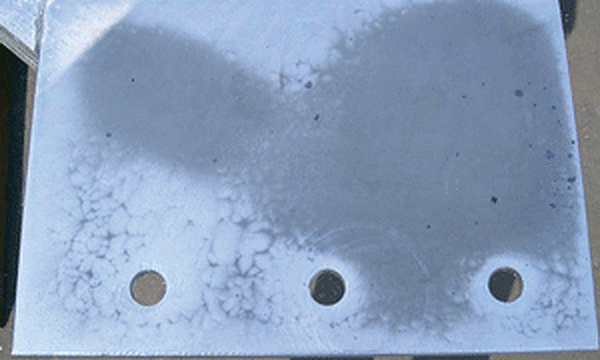
You will notice none of these requirements discuss variation in appearance or color, such as mottling (Figure 1), matte gray finishes (Figure 2), or dark finishes (Figure 3). The appearance requirements of the above hot-dip galvanizing specifications focus on ensuring a quality galvanized coating is applied to the steel, as opposed to visual differences in the color of the galvanized coating. The reason for this is the color differences do not affect the corrosion performance of the galvanized coating.
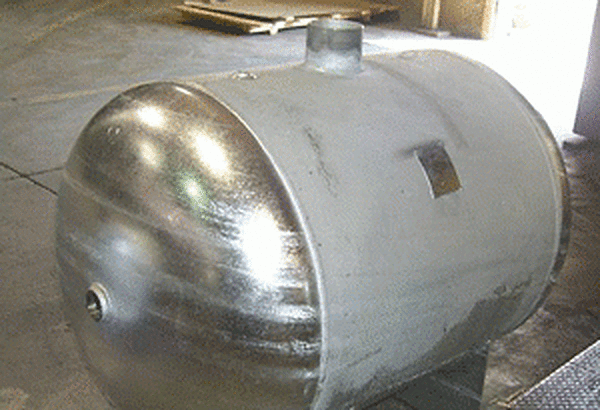
ASTM A385 is the only batch hot-dip galvanizing specification that discusses variation in appearance or color and states, in general, hot-dip galvanized coatings are specified for corrosion protection rather than appearance. This specification goes on to state the corrosion protection of galvanized coatings with varied appearances is equal for all practical purposes.
It is also important to note touch-up materials can alter the appearance of the galvanizing finish as they are not usually an exact color match. These variations are not cause for rejection. As the galvanized coating weathers over time, variation in appearance due to steel chemistry and touch-up materials will usually assume a more uniform appearance.
Are specifiers allowed to reject their galvanized steel when it does vary in color? The answer is no, not according to the above requirements. The only exception is when the galvanizer agrees to provide a galvanized coating with a specific appearance, such as for architecturally exposed structural steel (AESS). In those cases, steel selection is usually of utmost importance and a price premium is usually added to the job to account for possibly having to galvanize the steel multiple times to ensure the desired appearance is achieved. These kinds of stipulations should be included in the purchase order.
In summary, the biggest concerns in meeting the appearance requirements of ASTM galvanizing specifications address safety and ensuring a high quality galvanized coating that will provide good corrosion protection is applied to the steel. Specifiers can be sure even though visual differences in the coating might exist, they are not cause for rejection and in the end, they are still getting a high quality galvanized coating that will last for many years.
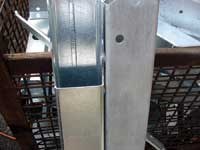
The image to the right shows products with connected galvanized pieces that have different appearances. The appearances of these pieces differ greatly from one another due to the steel chemistry of the different sections of the parts; however, all of these products continue to have an equal amount of corrosion resistance throughout and meet the specification.
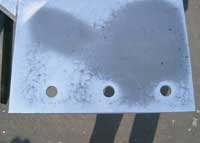
A visually dull and shiny coating on a product can also be the result of a different cooling rate. In the image to the left, the outer edges of the product were cooled rapidly, allowing a free zinc layer to form on top of the inter-metallic layers. As the product weathers, the differences in appearance will become less noticeable and the overall color will turn a uniform, dull gray.
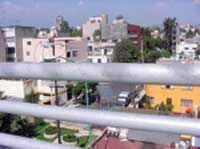
The fabrication and processing of the steel can also create a bright or dull appearance in galvanized products. The top rail in the image to the right has a winding pattern of dull gray areas corresponding to the process used during the making of the tube. The stresses in the steel from processing affect the inter-metallic formation and can result in this striped look. The corrosion protection is not affected and these parts meet the specification.
See Also: The Inspection of Hot-Dip Galvanized Steel Products
© 2025 American Galvanizers Association. The material provided herein has been developed to provide accurate and authoritative information about after-fabrication hot-dip galvanized steel. This material provides general information only and is not intended as a substitute for competent professional examination and verification as to suitability and applicability. The information provided herein is not intended as a representation or warranty on the part of the AGA. Anyone making use of this information assumes all liability arising from such use.

